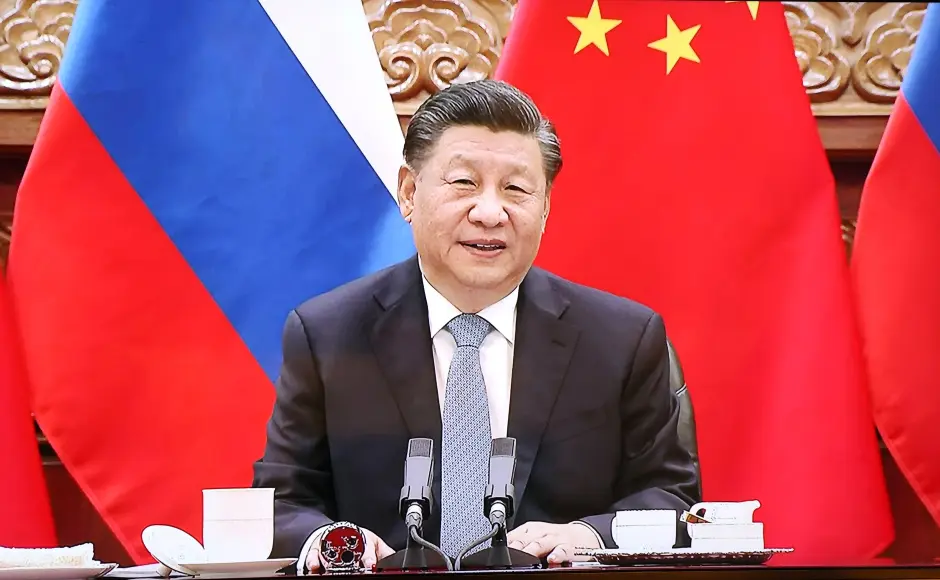China’s ambition to cement its status as a global superpower and economic juggernaut has been a defining feature of its trajectory over the past few decades. Under Xi Jinping’s leadership, the country has pursued a multifaceted strategy that blends economic expansion, geopolitical maneuvering, and military modernization. At the heart of this effort lies the Belt and Road Initiative (BRI), a colossal infrastructure and investment project that spans continents and aims to redraw global trade routes in China’s favor. Coupled with strategic partnerships with nations like Iran, Russia, and North Korea, China’s moves have sparked alarm in the United States and Europe, prompting varied responses. Meanwhile, tensions over Taiwan and the specter of broader conflict loom large, raising questions about whether China is gearing up for war or simply fortifying its position in a fractious world.
China’s ascent as an economic powerhouse is no accident. Since opening its economy in the late 1970s, it has transformed from an agrarian backwater into the world’s second-largest economy, rivaling the United States in sheer output and influence. The BRI, launched in 2013, is the cornerstone of this ambition. Often dubbed the “New Silk Road,” it seeks to connect Asia, Europe, Africa, and beyond through a sprawling network of roads, railways, ports, and energy projects. With investments estimated to exceed $1 trillion already—and projections suggesting a potential $8 trillion over its lifespan—the BRI is less about altruism and more about securing China’s economic dominance. By funding infrastructure in over 150 countries, China binds these nations to its economy, ensuring access to resources, markets, and strategic locations. The China-Pakistan Economic Corridor, for instance, links China’s western regions to the Arabian Sea, bypassing vulnerable maritime chokepoints like the Malacca Strait, where U.S. naval power holds sway.
Debt-Trap Diplomacy
Yet, the BRI is not without its cracks. Critics call it “debt-trap diplomacy,” pointing to cases like Sri Lanka, where inability to repay loans led to the handover of a strategic port to Chinese control. The initiative’s shine has dulled as some projects stall amid economic slowdowns and local backlash, exacerbated by the COVID-19 pandemic. Still, Xi remains committed, tying the BRI to his personal legacy and even enshrining it in the Communist Party’s constitution. It’s a bold play to reshape the global economic order, positioning China as the hub of a new, interdependent system that challenges Western dominance.
China’s partnerships with Iran, Russia, and North Korea amplify this strategy, forming what some analysts term an “axis of upheaval.” These relationships are pragmatic rather than ideological, rooted in shared grievances against a U.S.-led world order. With Iran, China has forged a 25-year economic and security pact, signed in 2021, aimed at boosting trade and investment while countering U.S. sanctions. Iran’s oil flows to China, and Chinese infrastructure projects bolster Tehran’s regional clout, though progress has been slower than promised. Russia, meanwhile, offers a strategic counterweight to NATO and a testing ground for cooperation, with China buying discounted energy and supplying dual-use tech amid the Ukraine war. North Korea, though erratic, serves as a buffer state and a thorn in America’s side, its missile programs quietly benefiting from Chinese support. Together, these ties enhance China’s leverage, projecting power across Eurasia and complicating Western containment efforts.
The United States has not stood idle. Under both Trump and Biden, Washington has pivoted to counter China’s rise with a mix of competition and coalition-building. The Biden administration’s “Build Back Better World” (B3W) initiative, later folded into the G7’s Partnership for Global Infrastructure and Investment, aims to rival the BRI by offering $600 billion in transparent, sustainable projects to developing nations. The India-Middle East-Europe Corridor (IMEC), unveiled at the 2023 G20 summit, seeks to link key regions while sidelining China. Militarily, the U.S. has bolstered alliances like the Quad (with Japan, India, and Australia) and AUKUS (with Australia and the UK), deploying advanced weaponry to the Indo-Pacific and arming Taiwan to deter aggression. Economic measures, like tech export controls and efforts to “friendshore” supply chains away from China, aim to blunt Beijing’s edge. It’s a strategy of de-risking rather than decoupling, but the rhetoric—labeling China a “near-peer competitor”—signals a long-term showdown.
Europe’s Response
Europe’s response is more fragmented. The European Union sees China as a partner, competitor, and systemic rival all at once. The BRI has split the bloc: while countries like Greece and Hungary embrace Chinese investment, others, like France, warn of vassalization. The EU’s Global Gateway, a $300 billion infrastructure plan, is a direct pushback, though its scale pales next to the BRI. Germany, heavily reliant on Chinese markets, treads cautiously, but recent moves—like blocking Chinese takeovers of tech firms—show growing wariness. The Ukraine war has sharpened Europe’s view, with some leaders linking China’s support for Russia to broader threats. Still, lacking the U.S.’s military heft, Europe leans on economic tools and diplomacy, struggling to forge a unified front.
As for war, China’s intentions remain murky. Taiwan is the flashpoint. Xi has vowed reunification, by force if necessary, and China’s military buildup—hypersonic missiles, a growing navy, and frequent drills near the island—suggests preparation. Yet, an all-out invasion carries staggering risks: economic collapse from sanctions, a grueling urban war, and potential U.S. intervention. Against America directly, conflict seems less imminent. China’s strategy prioritizes winning without fighting—eroding U.S. influence through economic and diplomatic means rather than battlefield victories. The BRI and its partnerships are weapons in this slow-burn struggle, not preludes to World War III. That said, miscalculation over Taiwan or the South China Sea could spiral unpredictably.
China’s drive to superpower status is audacious but fraught. The BRI binds the world closer to Beijing, while ties with Iran, Russia, and North Korea unsettle the old order. America counters with alliances and economic pressure; Europe gropes for coherence. War isn’t inevitable, but the stakes are sky-high. Xi’s vision hinges on execution—stumbles in the BRI or overreach abroad could stall China’s rise, leaving it a giant, but not the giant, of the 21st century.
